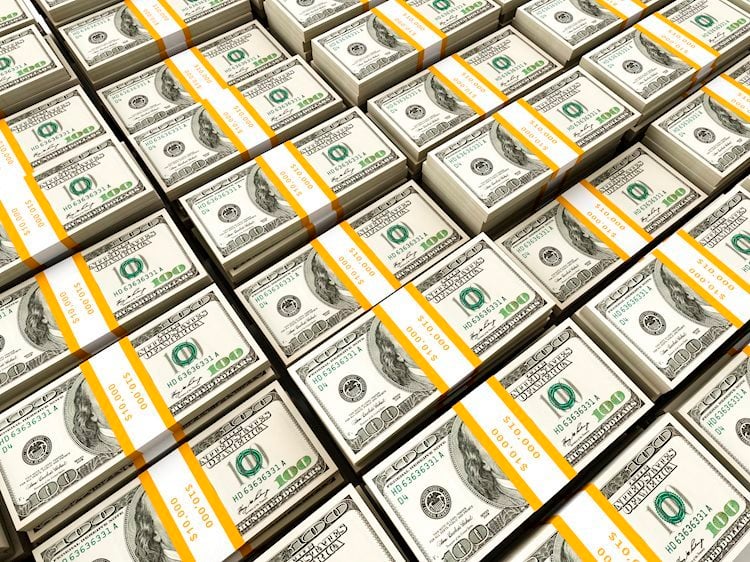- DXY Index plunged towards the 101.90 area, posting 0.40% daily losses.
- Gross Domestic Product of the United States expanded at an annual rate of 4.9% in Q3, revised from 5.2%
- US Jobless Claims accelerated in the second week of December.
The US Dollar (USD) measured by the DXY index plunged to 101.90 and nears December lows struck last week, steered by the downward revisions in US Gross Domestic Product (GDP) from Q3. Negative Jobless Claims and Philadelphia’s Fed manufacturing conditions figures also added to the downturn.
At the Fed’s last meeting, policymakers sent a dovish signal to markets. The cooling inflation and the absence of rate hikes in 2024, alongside 75 bps of easing forecasts, are all reflective of a less aggressive stance that weakened the US Dollar. Until the next bank’s meeting, all data that suggest a slowdown in the economy may pave the way for further downside, and the expectations of sooner rate cuts next year may come to fruition.
Daily digest market movers: US Dollar plunges as soft data and lower yields weigh
- The US Dollar trending downward, bordering on December lows.
- The US Q3 real GDP growth was revised down to 4.9%, from the initial 5.2% estimate due to reduced consumer spending and lower imports reported by the Bureau of Economic Analysis (BEA).
- The Philly Fed Manufacturing sector survey for December plunged to -10.5.
- Initial Jobless Claims for the week ending December 16, published by the US Department of Labor, increased to 205K from the previous 202K, but came in lower than the 215K expected.
- US bond yields declined following the release but seem to be recovering, with the 2-year yield at 4.34%, the 5-year yield at 3.86%, and the 10-year yield also at 3.87%, near multi-month lows, adding pressure to the USD.
- As per the CME FedWatch Tool, markets are betting on rate cuts on March 2024.
- November Personal Consumption Expenditures (PCE) Price Index figures from the US are due on Friday, which may fuel additional volatility on the index.
Technical Analysis: US Dollar Index selling momentum resumes, dampening recent upsurge
On the DXY daily chart, the Relative Strength Index (RSI) exhibits a downward slope within negative territory, indicating a strong bearish momentum. Despite bulls gaining some ground in the last sessions, the overwhelming selling force isn’t allowing a significant shift in the short-term trend. On the Moving Average Convergence Divergence (MACD), rising red bars signal a sell-off is underway, further validating the negative outlook.
Looking at the Simple Moving Averages (SMAs), the index position below the 20,100, and 200-day metrics shows a long-term dominance of the bears. This challenging position for the buyers, combined with the RSI and MACD indications, brings forth a short-term, bearish technical outlook.
Support levels: 101.80,101.50, 101.30.
Resistance levels: 103.10 (20-day SMA), 103.50 (200-day SMA), 104.00.
Fed FAQs
Monetary policy in the US is shaped by the Federal Reserve (Fed). The Fed has two mandates: to achieve price stability and foster full employment. Its primary tool to achieve these goals is by adjusting interest rates.
When prices are rising too quickly and inflation is above the Fed’s 2% target, it raises interest rates, increasing borrowing costs throughout the economy. This results in a stronger US Dollar (USD) as it makes the US a more attractive place for international investors to park their money.
When inflation falls below 2% or the Unemployment Rate is too high, the Fed may lower interest rates to encourage borrowing, which weighs on the Greenback.
The Federal Reserve (Fed) holds eight policy meetings a year, where the Federal Open Market Committee (FOMC) assesses economic conditions and makes monetary policy decisions.
The FOMC is attended by twelve Fed officials – the seven members of the Board of Governors, the president of the Federal Reserve Bank of New York, and four of the remaining eleven regional Reserve Bank presidents, who serve one-year terms on a rotating basis.
In extreme situations, the Federal Reserve may resort to a policy named Quantitative Easing (QE). QE is the process by which the Fed substantially increases the flow of credit in a stuck financial system.
It is a non-standard policy measure used during crises or when inflation is extremely low. It was the Fed’s weapon of choice during the Great Financial Crisis in 2008. It involves the Fed printing more Dollars and using them to buy high grade bonds from financial institutions. QE usually weakens the US Dollar.
Quantitative tightening (QT) is the reverse process of QE, whereby the Federal Reserve stops buying bonds from financial institutions and does not reinvest the principal from the bonds it holds maturing, to purchase new bonds. It is usually positive for the value of the US Dollar.
